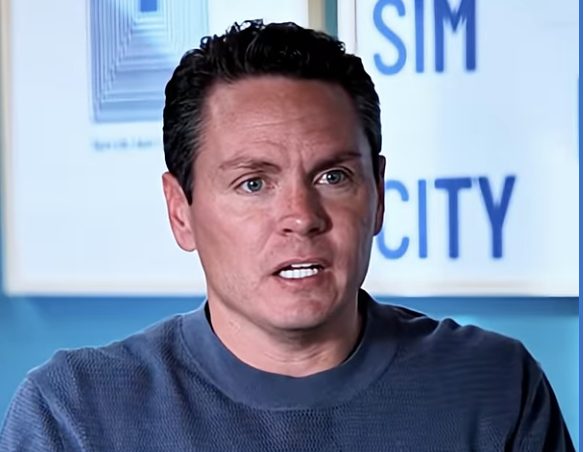What if we’ve been looking at mental health all wrong? I’ve spent years working with clients struggling with anxiety, depression, ADD, OCD, and addiction, and I’ve come to a profound realization: these conditions aren’t actually the problem—they’re solutions our minds have created to protect us.
When we examine these conditions closely, we can see they’re different adaptations to the same root issues. Our symptoms are merely survival strategies, not the core problem. This perspective shift can transform how we approach healing.
The Common Roots of Different Mental Health Conditions
Through my work with countless individuals on their healing journeys, I’ve observed that seemingly different mental health conditions often stem from the same sources:
- Unresolved trauma
- Unmet emotional needs
- Deep-seated fear of inadequacy
- Nervous systems stuck in protection mode
These core wounds manifest differently in each person, but the underlying pain is remarkably similar. Some people develop anxiety as a way to stay vigilant against potential threats. Others fall into depression, shutting down emotions that feel too overwhelming to process.
I explore this concept extensively in my book “State Within Light: The Path to Enlightenment,” particularly in chapter 3, where I break down how these protection mechanisms develop and function.
Different Strategies, Same Purpose
Our minds are incredibly resourceful when it comes to self-protection. Consider how these different conditions serve as protection mechanisms:
- Anxiety: Overthinking to prevent future pain
- Depression: Emotional shutdown to avoid feeling overwhelming emotions
- ADD: Constant busyness to avoid sitting with uncomfortable feelings
- OCD: Creating control systems when life feels chaotic
- Addiction: Self-medicating to numb pain
At their core, all these strategies share a common message: “It’s not safe to be me as I am.” Our nervous systems, having never experienced true safety, remain in protection mode, constantly scanning for threats and developing sophisticated defense mechanisms.
Reframing Our Approach to Healing
When we recognize that these conditions are actually adaptive responses rather than random malfunctions, we can approach healing with greater compassion. Instead of trying to eliminate symptoms, we can honor them as protective measures that once served us well.
This shift in perspective allows us to ask better questions: What is this symptom protecting me from? What unmet need is it trying to fulfill? What would happen if I felt truly safe?
The path forward isn’t about fighting against our protective mechanisms but understanding them with kindness. By addressing the underlying wounds—creating safety in our nervous systems, meeting our emotional needs, and healing trauma—the protective strategies often naturally relax their grip.
Finding the Path to True Healing
Real healing begins when we stop pathologizing our protective responses and start honoring the wisdom behind them. This doesn’t mean we should simply accept suffering—rather, we acknowledge that our minds created these adaptations for good reason.
My work with clients focuses on creating genuine safety—both in the therapeutic relationship and within themselves. As people begin to feel secure enough to explore their core wounds, I witness remarkable transformations. The anxiety, depression, or addictive behaviors that once seemed like the problem gradually reveal themselves as messengers pointing toward deeper healing.
The journey isn’t about becoming someone new but returning to who we’ve always been beneath the protective layers. When we address the fundamental feeling that “it’s not safe to be me,” we create space for our authentic selves to emerge.
By reframing mental health struggles as solutions rather than problems, we open new pathways to healing—ones based on compassion, understanding, and a recognition of our mind’s remarkable capacity for self-protection.
Frequently Asked Questions
Q: How can viewing mental health conditions as “solutions” help with treatment?
When we view conditions like anxiety or depression as adaptive responses rather than random malfunctions, we can address the root causes with more compassion. This perspective helps us understand what these symptoms are protecting us from, making treatment more targeted and effective. Rather than just managing symptoms, we can heal the underlying wounds that created the need for these protective strategies.
Q: Are you suggesting we shouldn’t treat mental health conditions with medication?
Not at all. Medication can be an important part of treatment, especially when symptoms are severely impacting quality of life. What I’m suggesting is that we expand our approach beyond symptom management to include addressing the underlying causes. For many people, a combination of approaches—including medication when appropriate—offers the most comprehensive path to healing.
Q: How do I identify what my mental health symptoms might be protecting me from?
Self-reflection, possibly with the help of a therapist, can reveal patterns. Ask yourself when your symptoms first appeared and what was happening in your life at that time. Notice what situations trigger your symptoms now. Often, our protective mechanisms activate in response to situations that remind us of past wounds or threats. Journaling about these patterns can provide valuable insights into what your symptoms might be protecting you from.
Q: Can childhood experiences really affect our mental health as adults?
Absolutely. Our nervous systems develop in response to our earliest experiences. When childhood experiences include trauma, neglect, or inconsistent caregiving, our systems learn to stay in protection mode. These early patterns can persist into adulthood, even when the original threats are no longer present. Understanding this connection between childhood experiences and adult mental health is often key to healing.
Q: What does it mean for the nervous system to feel “safe”?
A nervous system that feels safe can rest, digest, connect with others, and respond flexibly to situations rather than reacting from fear. Creating safety involves both physical and emotional components—establishing boundaries, developing supportive relationships, learning self-regulation skills, and processing past traumas. When our nervous systems feel safe, many protective mechanisms naturally begin to relax, as they’re no longer needed for survival.







